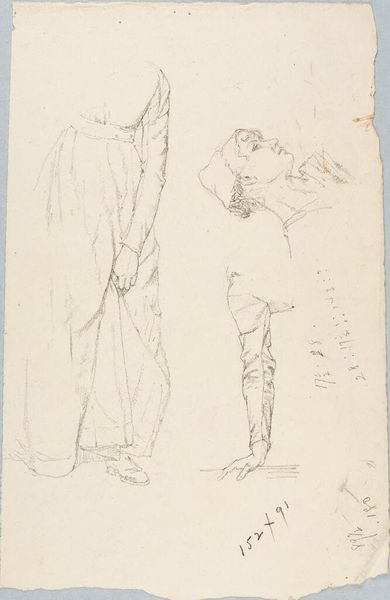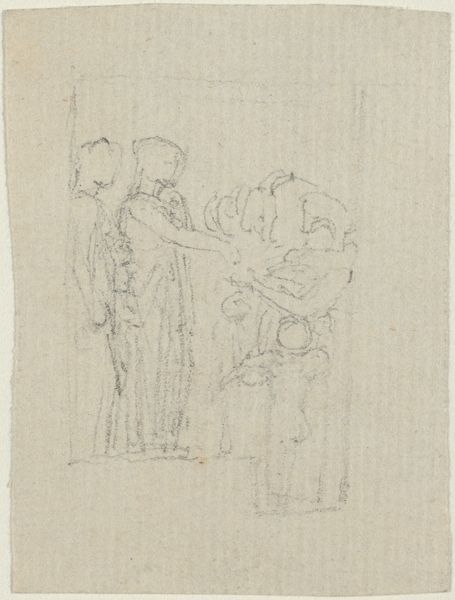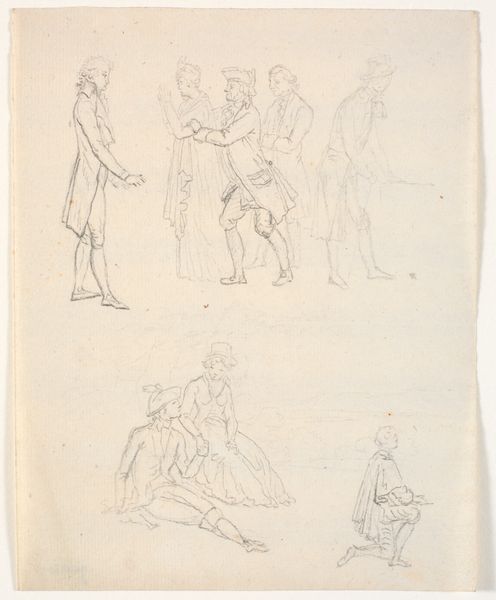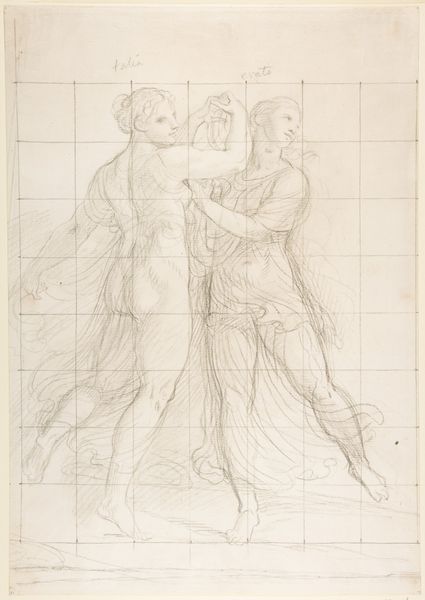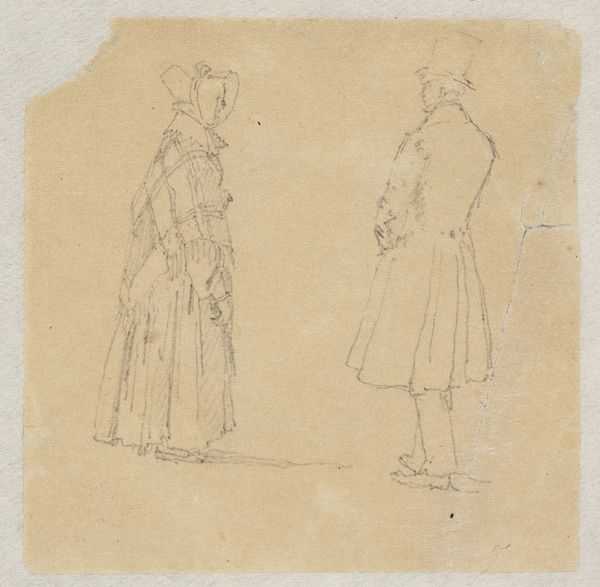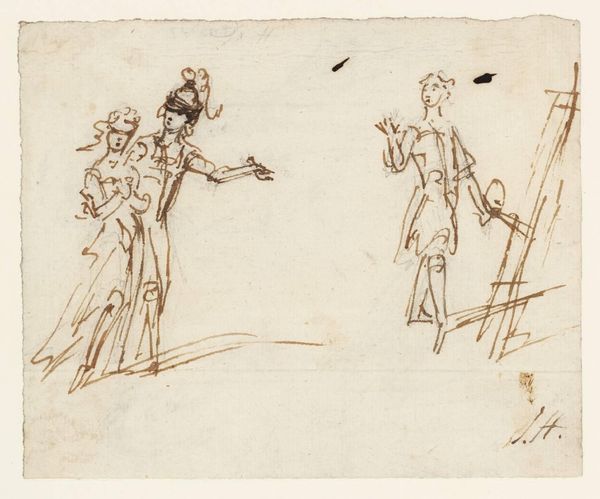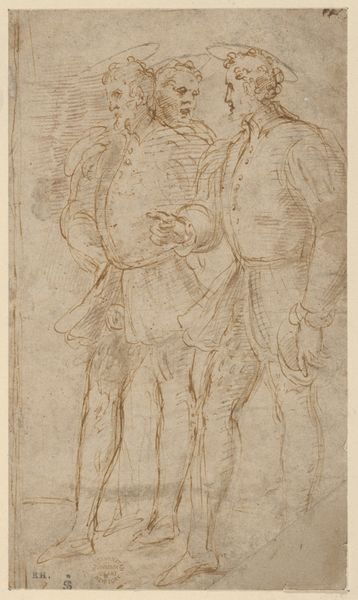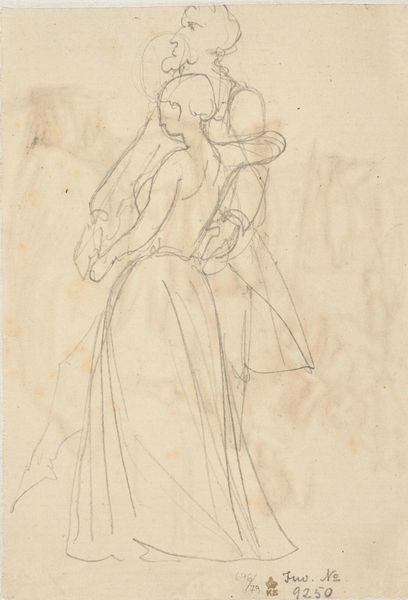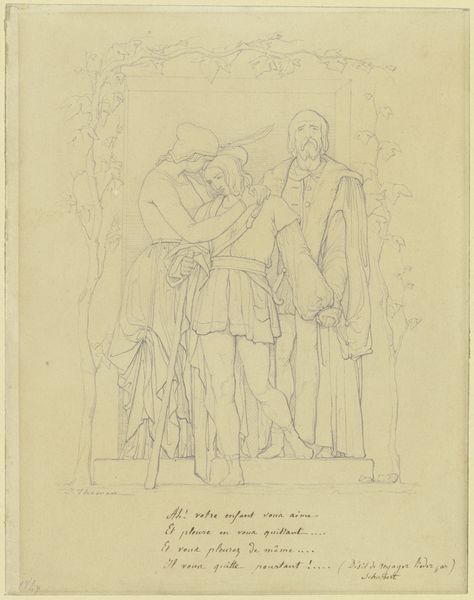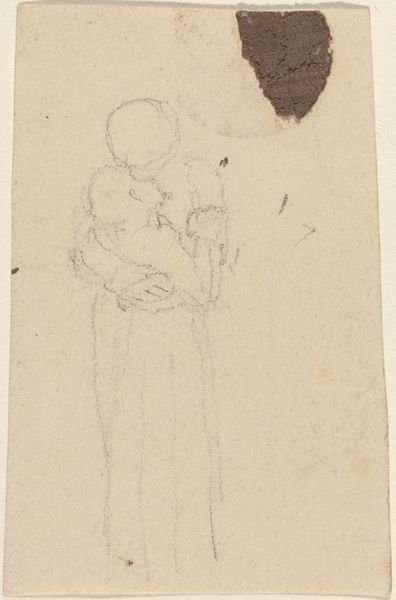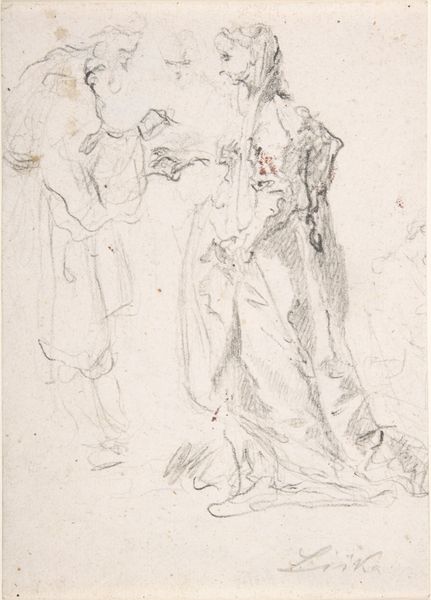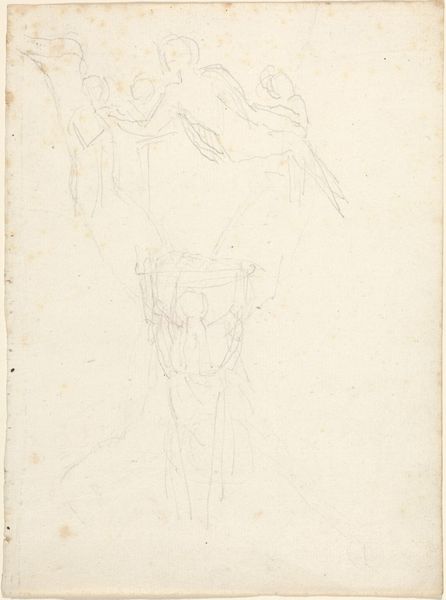
Liebespaar in mittelalterlicher Tracht, darunter Details des Schmucks
0:00
0:00
drawing, pencil
#
portrait
#
drawing
#
imaginative character sketch
#
light pencil work
#
16_19th-century
#
quirky sketch
#
figuration
#
personal sketchbook
#
german
#
idea generation sketch
#
sketchwork
#
ink drawing experimentation
#
sketch
#
romanticism
#
pencil
#
sketchbook drawing
#
storyboard and sketchbook work
#
sketchbook art
Copyright: Public Domain
Curator: So, what captures your attention about Gustav Heinrich Naeke’s “Liebespaar in mittelalterlicher Tracht, darunter Details des Schmucks,” this sketch of a medieval couple? Editor: The way the artist uses light pencil work really emphasizes the details of their clothing. You can even see studies of jewelry beneath the figures! How does the medium contribute to the overall meaning, would you say? Curator: Precisely. This isn’t some grand oil painting meant to glorify the elite. It’s a drawing, an exploration of labor through dress, really. Look closely. What can we decipher about their social standing based on the materials that constitute their clothes and accessories? Editor: The woman’s elaborate gown suggests a higher status than what is initially observed, but these seem like quick sketches done in preparation of a final product that isn't there, focusing on the materials and process rather than on perfect portrayal... Curator: Exactly. Think about the material limitations present in the early 19th century; how the pigments were derived, who had access to what fabrics, or the tools used to craft jewelry and garments. Are they generic 'types', or individual personalities? Editor: That's an interesting point! Looking at the faces, they’re rendered with such simplicity it does come across as more like general observations than as detailed portraits of specific people, more about process and less about result! Curator: Indeed! It underscores the artist's interest in the process and the elements. Naeke isn't aiming to immortalize individuals but deconstructs elements of social class through the granular focus on material culture within Romanticism. So how does that change your perspective? Editor: I'm starting to see the art as a commentary on production as an entry to portray the depicted individuals. Thanks to your expertise, the artist’s attention to the social relevance of process has really become clear for me. Curator: Wonderful. Examining art from a materialist perspective certainly sheds a new light on even seemingly simple drawings.
Comments
No comments
Be the first to comment and join the conversation on the ultimate creative platform.
